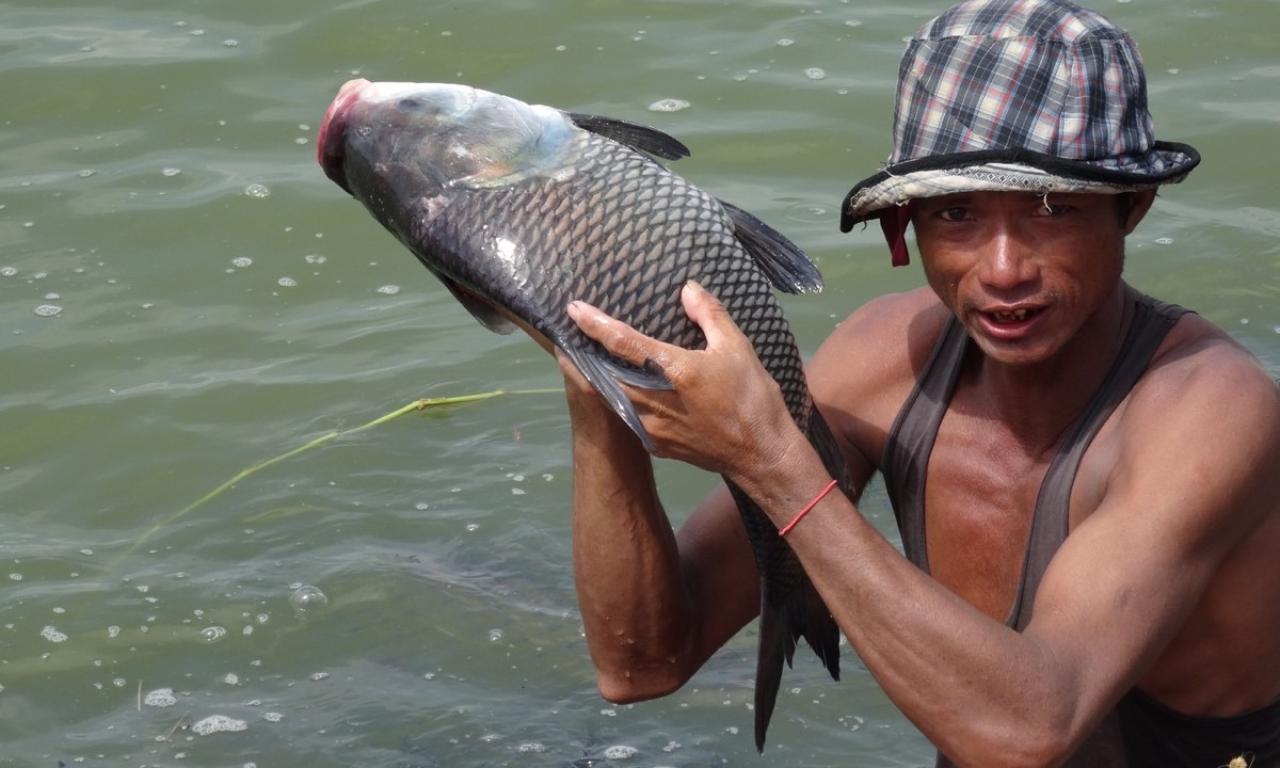
Farmed fish is playing an ever larger role in Asian diets, contributing to diversification away from the main staple food, rice. But what are the implications of such changes for nutrition, health and livelihoods?
Recommended publications
- A quiet revolution emerging in the fish-farming value chain in Myanmar: Implication for national food security
- Higher fish but lower micronutrient intakes: Temporal changes in fish consumption from capture fisheries and aquaculture in Bangladesh
In response to the declining availability of wild fish stocks and growing consumer demand, aquaculture (fish farming) has become the world's fastest growing food production sector. Farmed fish is playing an ever larger role in Asian diets, contributing to diversification away from the main staple food, rice. What are the implications of such changes for nutrition, health and livelihoods? One of Feed the Future Innovation Lab for Food Security Policy's teams studies fish farming and its impact on food security in Myanmar. Their findings will be used to guide policies for the development of the emerging aquaculture sector.
Also called Burma, Myanmar is located on the eastern side of the Bay of Bengal, bordered by India and Bangladesh on its western side and China, Laos and Thailand on its eastern side. Fish has long been the leading source of animal protein and major supplier of micronutrients in Asian societies. Micronutrients play an essential role in healthy child development, particularly during the first 1,000 days of life. This is the case in Myanmar, where fish accounts for an important share of the food budget: households spend just a little less on fish (14 percent of food expenditure) than on rice (19 percent of food expenditure).
Fish farming is a relatively recent sector in Myanmar. It currently accounts for only about 20 percent of fish consumption, a long way behind neighboring Thailand (about 80 percent) and Bangladesh (55 percent). But, like in the rest of Asia, demand for fish is increasing in Myanmar as urbanization proceeds and incomes grow. In only a decade or so, it is anticipated that half of the farmed-fish produced in Myanmar will be eaten in the country’s own cities. Fish farming is already an important source of employment, creating almost four times more demand for labor per acre as rice paddy farming on average. And it will continue to grow.
Fish has long been the leading source of animal protein and major suppliers of micronutrients in Asian societies.
What are the nutritional consequences of substituting farmed fish for wild fish? Higher production of fish is of course crucial in guaranteeing access to fish for all, in particular as wild fish availability declines. However, farmed fish and wild fish are usually different species and therefore have different nutritional values. For example, some species of small wild fish contain extremely high concentrations of micronutrients such as vitamin A and zinc. The nutrient content of most of the main farmed fish species is relatively low in comparison. The parts of the fish that are eaten also make a difference. Farmed fish are usually marketed at large sizes, and typically only the meat is eaten. In contrast, small fish are normally eaten whole, including the head and bones. This greatly improves the micronutrient intake as the bones, which contain calcium, and organs rich in other micronutrients are consumed. A recent study from Bangladesh shows that even though total consumption of fish increased by 30 percent from 1991 to 2010 with the growth of aquaculture, intakes of some key micronutrients remained static and others actually declined because wild fish became scarcer.[3]
Three recommendations emerged from this study:
- Manage capture fisheries better so wild stocks don’t decline any further.
- Diversify the diet more, including by increasing the production and consumption of standard farmed fish.
- At the same time, develop technology for mass production of small fish through aquaculture to make them more widely available.
However, in Myanmar, a single group of fish — Indian carps — constitute more than 80 percent of all farmed fish. Diversifying aquaculture to produce new species could provide new market opportunities for farmers at the same time as providing health benefits to consumers. Nutrition-sensitive aquaculture policies for this expanding economic sector could guide and support farmers in the adoption of new farming practices with multiple benefits for all.